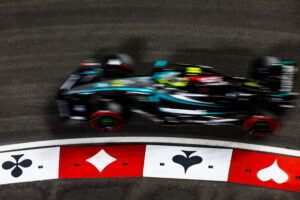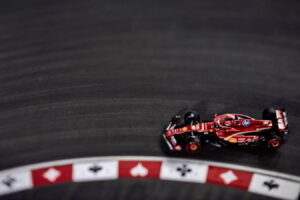The Formula 1 2018 season will start with the new cars on track this Friday at the season-opening Australian Grand Prix at Albert Park, Melbourne (March 23-25 2018). The 2017 season saw a slew of changes to the rules and regulations governing the sport. The new twenty-one race season will have fewer regulation changes compared to last season. So the new cars will be more of an evolution of the cars of the previous season.
Preview of the Formula 1 2018 season – Regulation Changes
The top management of the sport has stabilized with new owners Liberty Media taking full control of the destiny of the sport. Chase Carey (Chief Executive Officer), the experienced Ross Brawn (Managing Director of Motorsports) and Sean Bratches (Managing Director of Commercial Operations) are overseeing significant changes to the sport on and off the track.
F1 has a new logo and theme music, to rebrand the sport and keep up with the times. The decision was made to replace grid girls with grid kids. This is a bid for Formula1 to showcase itself as a progressive sport. This has been met with support and criticism in equal measure. The races on Sunday will now start ten minutes later to allow broadcasters to show the tense buildup to the start of the race. The European and Brazilian races and session starts have been moved back to reach a larger TV audience.
New F1 calendar: https://www.formula1.com/en/latest/headlines/2017/9/2018-calendar.html
Revised Session Times: https://www.formula1.com/en/latest/headlines/2018/2/new-race-weekend-schedule-announced-for-2018.html
Technical Regulation Changes:
These Regulations cover the cars and the systems every season.
- The new Halo System – The cockpit protection system in a standard design significantly alters the look of the new challengers and will have minimum aerodynamic impact.
- Heavier Cars – The cars are going to be 6 Kgs heavier at 734 Kgs in 2018. The Halo system and the mountings is expected to add 13-15 Kgs weight overall. So 9 Kgs approx has to be the weight reduced from elsewhere.
- Shark Fins and T-Wings are no more – In 2017, the extended sharkfin engine covers were mounted with T-wings exploiting a loophole in the regulations. These elements have entirely been removed this season.
- Trick Suspensions Outlawed – Trick Suspension Systems that were used to alter the ride heights of the car based on steering angles and improve aerodynamic performance in 2017 cannot be used. The FIA directive has said flexing of more than 5mm will not be allowed and will be monitored strictly.
- Engine Oil Usage Rules – The maximum of 105 Kg fuel in a car for the race and fuel flow limit of 100 kg/hour remains in place. The teams are now allowed to burn only 0.6 Litre of oil per 100 kms. The rules were changed mid-season and set to 0.9L per 100 kms in 2017. This season it has been further reduced and will be montired strictly. Samples will also be tested to make sure additives are not added.
Sporting Regulation Changes:
These Sporting regulations cover how races are run and how those cars are used.
- Three Engines Per Driver – The new three engines per driver rule over a 21-race season has raised the hackles of many teams. Last season the drivers had four engines with one race less. This new regulation is to improve engine reliability and ensure lesser costs. But teams fear the season will be distorted by drivers suffering excessive engine penalties.
- Changes to Grid Penalties – Simpler Grid Penalty rules for the season has been introduced. This might be necessary given that 3 engines for the whole season could see many drivers penalized for new Power Units or parts over the three allowed. Now, any driver who earns a grid penalty of 15 places or more will have to start from the back of the grid. If more than one driver receives such a penalty they will be arranged at the back of the grid in the order in which they changed elements.
- New Pirelli Tyre Compounds – Pirelli has introduced two entirely new tyre compounds – pink-striped hypersofts and orange-striped superhards. So there will be seven slick tyre compunds, along with the wet and intermediate tyres.
Technical Innovations:
The Technical Regulation changes in F1 clearly define what cannot be done by the teams. This helps the teams push the boundaries of what is allowed and brings forth many innovations in the new cars every season:
- The 2017 regulation changes were mainly aerodynamics-related and increased the downforce of the cars. Red Bull Racing, led by its Chief Technical Officer Adrian Newey, was tipped to be one of the frontrunners. But they were outdone by Ferrari with the intricate barge boards and sidepods design last year. This year the RB14 has a complex barge boards arrangement that can set the pace in this area.
- Ferrari has now gone for the extended wheelbase that Mercedes used on their cars last year. This caused significant setup issues on the slower, twisty tracks for Mercedes. But their car was superfast at the high-speed power circuits. Ferrari has gone for an aggressive design with the longer wheelbase (3678mm) and stuck with their high-rake philosophy.
- More aggressive aerodynamic designs by the Italian team, with intricate front wings, slotted wing mirrors and new bodywork channels, to catch up with Mercedes is evident.
- The newly-introduced Halo System has added weight to the cars. The designers have also had to put in a lot of effort to minimize the disruption of airflow and have innovated with small fins, teeth (stegosaurus solution of Haas F1), fairings on top of the Halo.
- Many teams like Sauber has taken Ferrari’s innovative sidepods design of last year further for more aerodynamic and cooling efficiency.
- Williams have tried to retain the aerodynamic effects of the sharkfin engine cover with an innovative T-shaped engine cover design.
Technical Controversies:
- The FIA has clarified that Renault R.S.18 with the exhaust pipe angled to blow the underside of the rear wing is legal. Other teams will watch this development with interest.
- The clampdown mid-season on the burning of oil to provide a power boost generated a lot of controversies last season. The strict rules this season has created the smoking Ferrari engines. Red Bull has already questioned the FIA on how they will effectively monitor the new limits. This will certainly lead to more jostling between the teams this season.
Development Race:
The top teams have an edge over the other teams in this aspect. They have the resources to continue the development and bring new updates to the car until the very last race of the season. The name of the game is to not only start with innovative designs that push the boundaries of the technical regulations for a new season, but also study other teams new designs. Then try to incorporate the more successful innovations as the cars develop during the season.
The 2018 F1 cars could potentially be the fastest F1 cars ever. Will this be the year when teams like Red Bull Racing and Ferrari end the Mercedes four-year domination of the sport?
MAIN PHOTO:
Embed from Getty Images






